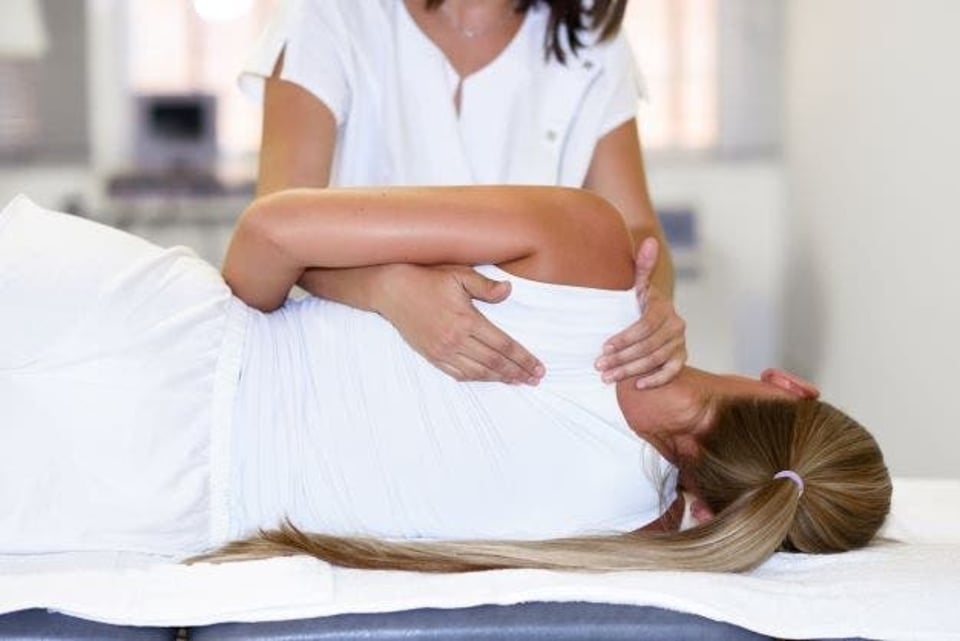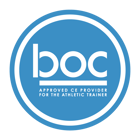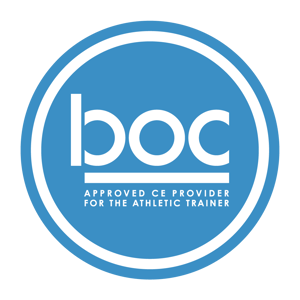Rotator Cuff: Conservative and Postsurgical Management, an Evidence-Based Update

Description
This course provides physical therapy and occupational therapy professionals with a thorough overview of the factors involved with managing patients with pathology of the rotator cuff. The course examines the anatomy, pathophysiology, epidemiology, clinical presentation, and differential diagnosis of rotator cuff problems. Conservative management, surgical intervention, postsurgical rehabilitation, and a variety of evidence-based treatment options for patients with rotator cuff disorders are discussed, all aimed at maximizing the patient’s functional outcomes. Therapist Tips and case studies help focus the clinician’s application of the material. This course will be immediately useful in clinical practice for Rehab professionals who work with patients diagnosed with rotator cuff issues.



Physicourses is an AOTA Approved Provider of professional development. Course approval ID# 6295. This distance learning-independent course is offered at 0.7 CEUs Intermediate Level, OT Service Delivery, Foundational Knowledge. AOTA does not endorse specific course content, products, or clinical procedures.
Available Course Credits
| Alaska State PT & OT Board | 7.00 | ||
 |
AOTA | 7.00 | |
| Arizona State Board of Physical Therapy | 7.00 | ||
| Arkansas State Board of Physcial Thearpy | 7.00 | ||
 |
BOC | 7.00 | |
| California Physical Therapy Board | 7.00 | ||
| Colorado Division of Professions and Occupations | 7.00 | ||
| Connecticut Department of Public Health | 7.00 | ||
| Delaware Examining Board of Physical Therapists and Athletic Trainers | 7.00 | ||
| District Of Columbia Department of Health | 7.00 | ||
| FPTA | 7.00 | ||
| Georgia State Board of Physical Therapy | 7.00 | ||
| Hawaii Board of Physical Therapy | 7.00 | ||
| Idaho Physical Therapy Licensure Board | 7.00 | ||
| Indiana Physical Therapy Board | 7.00 | ||
| Iowa Board of Physical Therapy and Occupational Therapy | 7.00 | ||
| Kansas State Board of Healing Arts | 7.00 | ||
| Kentucky Board of Physical Therapy | 7.00 | ||
| Louisiana Physical Therapy Board | 7.00 | ||
| Maine Board of Physical Therapy | 7.00 | ||
| Maryland Board of Physical Therapy Examiners | 0.70 | ||
| Massachusetts Board of Allied Health Professionals | 7.00 | ||
| Michigan Board of Physical Therapy | 7.00 | ||
| Mississippi State Board of Physical Therapy | 7.00 | ||
| Missouri Advisory Commission for Physical Therapists | 7.00 | ||
| Montana Board of Physical Therapy Examiners | 7.00 | ||
| Nebraska Department of Health and Human Services | 7.00 | ||
| New Mexico Physical Therapy Board | 7.00 | ||
| North Carolina Board of Physical Therapy Examiners | 7.00 | ||
| North Dakota Board of Physical Therapy | 7.00 | ||
| Office of Professional Regulation, Vermont Secretary of State | 7.00 | ||
| Oklahoma Board of Medical Licensure and Supervision - Physical Therapy | 7.00 | ||
| Oregon Board of Physical Therapy | 7.00 | ||
| Pennsylvania Bureau of Professional and Occupational Affairs - Physical Therapy | 7.00 | ||
| Physical Therapy Governing Board New Hampshire | 7.00 | ||
| South Carolina Board of Physical Therapy | 7.00 | ||
| South Dakota Physical Therapy License Board | 7.00 | ||
| State of Alabama Board of Physical Therapy | 7.00 | ||
| State of Rhode Island Department of Health | 7.00 | ||
| Tennessee Board of Physical Therapy | 7.00 | ||
| Utah Physical Therapy Licensing Board | 7.00 | ||
| Virginia Board of Physical Therapy | 7.00 | ||
| Washington State Board of Physical Therapy | 7.00 | ||
| West Virginia Board of Physical Therapy | 7.00 | ||
| Wisconsin Physical Therapy License Board | 7.00 | ||
| Wyoming Board of Physical Therapy | 7.00 |
Course Content
| 481 Rotator Cuff: Conservative and Postsurgical Management, an Evidence-Based Update | Module | ||
| 481 quiz | Module | ||
| Course Evaluation | Module |
Sarah R.Stillings, MA, PT, MPT, CHT
Sarah R. (Sally) Stillings is a PT and Certified Hand Therapist in Texas. She received her physical therapy degree from the University of North Carolina at Chapel Hill. Prior to becoming a therapist, Sally taught university-level writing courses and was assistant editor of The Journal of Craniomandibular Practice. In her extensive career as a PT, she has held a variety of clinical, teaching, administrative, and business roles, including general PT practitioner, upper extremity specialist, clinic manager, hand therapy clinic coordinator, continuing education (CE) instructor, and CE course administrator. She has also served as Executive Director of the Kellermann Foundation, a U.S. nonprofit organization supporting healthcare and community development in Uganda, East Africa. Her work now focuses on creating evidence-based CE materials for rehab professionals. Sally is a lifelong runner who celebrates all those who cover the ground.

Management, an Evidence-Based Update—Course Objectives
After successfully completing this continuing education course, the learner should be able to:
1. Recall relevant anatomy and biomechanics of the shoulder joint and rotator cuff
2. Recognize the pathophysiology of acute and chronic rotator cuff injuries
3. Identify the etiology, classifications, and stages of rotator cuff injuries
4. Differentiate the various types of rotator cuff tears
5. Identify recent advancements in conservative and surgical management
6. Identify and apply (using case studies) conservative treatment options for patients with
rotator cuff pathology
7. Differentiate the main surgical methods used for rotator cuff repair and recall their
advantages and disadvantages
8. Identify and apply (using case studies) rotator cuff postsurgical therapy interventions for
patients at various stages of recovery
9. Recognize the rehabilitation principles involved in treatment of rotator cuff injury
10. Identify interventions appropriate to specific case studies in order to help patients regain
function.
481 Rotator Cuff: Conservative and Postsurgical
Management, an Evidence-Based Update—Table of Contents
HOUR 1
Course Instructions 2
About the Author / Course Description 3
Course Objectives 4
Table of Contents 5
Introduction 7
Chapter 1: Applied Anatomy and Biomechanics 8
Anatomy Review
Bones and Joints
Muscles: Humeral Movers 12
The Rotator Cuff 13
Functions and Biomechanics of the Rotator Cuff 17
Functions
Biomechanics 20
HOUR 2
Chapter 2: Definitions and Diagnosis 23
Definitions
Impingement Syndrome
Tendinosis 27
Rotator Cuff Tears 28
Risk Factors 30
Pathogenesis of Rotator Cuff Lesions 31
Vascular Insufficiency and Tendon Degeneration
Muscle Imbalance and Capsular Tightness 33
Glenohumeral Instability
Trauma 34
Progression of Rotator Cuff Degeneration
HOUR 3
Classifications of Rotator Cuff Lesions 37
Diagnosis of Rotator Cuff Pathology 41
History and Physical Examination
Special Tests 43
Imaging Studies 47
Chapter 3: Conservative Management
Patient Selection Criteria 51
Response to Treatment 54
Goals of Conservative Intervention
HOUR 4 56
Components of Conservative Management
Patient Education
Rest and Activity Modification 57
Medications 58
Manual Therapy 60
Exercise 61
Sample Conservative Rehabilitation Protocol 62
Phase I: Range of Motion 63
Phase I: Strengthening 64
Phase II 65
Phase III 66
Phase IV 68
Rehabilitation of Larger Rotator Cuff Tears 69
HOUR 5
Chapter 4: Surgical Intervention 73
Subacromial Decompression for Impingement Syndrome 76
Indications for Surgical Repair of Tears
Types of Rotator Cuff Repairs 77
Arthroscopic
Mini-Open 79
Open 80
Acromioplasty
Fixation Techniques 81
Other Surgical Interventions 83
Facilitating the Healing Process 84
Outcomes after Rotator Cuff Repair 85
Patient Factors
Surgical Factors 86
HOUR 6
Chapter 5: Postsurgical Rehabilitation 87
Factors in Creating a Postsurgical Rehabilitation Plan 88
Communication with the Surgeon 89
General Rotator Cuff Rehab Principles
Tissue Healing after Rotator Cuff Repair 90
Components/Goals of Postsurgical Rehabilitation 92
Phases of Postsurgical Rehabilitation 94
Factors Affecting Outcomes 96
Postsurgical Rehabilitation Protocols 97
Sample Protocol for Rehab after Rotator Cuff Repair 100
Phase I
Phase II 102
Phase III 104
Phase IV 106
HOUR 7
Conclusion 109
Case Studies 110
References 113
Examination 124
Evaluation 133
Customer Cancellation:
Customers may request cancellations of their enrollment or subscription in our digital or live educational services, subject to the terms outlined below. Cancellation requests must be made in writing, either through email or through our designated cancellation process.
Refund Policy:
Refunds will be provided according to the following guidelines: i) For cancellation requests made within 5 days of the initial enrollment or subscription, a full refund will be issued. Refunds will be issued using the same method of payment used for the original transaction, unless otherwise agreed upon in writing.
Provider Cancellation:
In the event Physicourses cancels your course, you will be issued a full refund or transfered to a course of equal or greater value.
Physicourses Conflict of Interest Disclosure Policy for Authors and Staff:
All persons in a position to control the content of any educational activity (authors or staff from Physicourses) are required to disclose to Physicourses any potentially biasing or potential conflict of interests in relationships of a financial, professional, or personal nature.
The intent of this disclosure is not to prevent authors or staff with commercial affiliations from planning an educational activity, or to prevent a Presenter with commercial affiliations from presenting, but rather to inform Physicourses of any potentially biasing relationships so that conflicts are resolved prior to the activity.
It is the policy of Physicourses to ensure balance, independence, objectivity and scientific rigor in all of its continuing education activities. All relevant conflicts of interest identified by the planner, presenter, or as determined by Physicourses will be disclosed to the audience verbally and in writing prior to the start of the presentation.
Definitions for Authors/Staff:
Relevant financial relationships are those relationships in which you benefit by receiving a salary, royalty, intellectual property rights, gift, speaking fee, consulting fee, honoraria, ownership interest (e.g., stocks, stock options, or other ownership interest, excluding diversified mutual funds), or other financial benefit. Financial relationships can also include “contracted research” where the institution gets the grant and manages the funds and you are the principal or named investigator on the grant.
Educational Level: Intermediate
Target Audience: PT, PTA, OT, OTA, ATC
Course Completion Requirements: Passing an online exam with 70% or greater will be required to earn continuing education credit
This course is approved for 0.7 CEUS. 7 contact hours
Physicourses is committed to ensuring accessibility to the most extensive audience possible. If you have any questions or special needs requests, please contact us at info@physicourses.com.